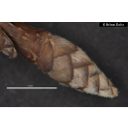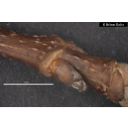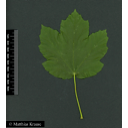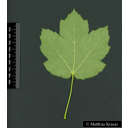Wissenswertes zu diesem Pflanzenindivuduum
Acer opalus Mill. 1768
Sapindaceae
- Seifenbaumgewächse (APG IV)Frühlings-Ahorn, Schneeballblättriger Ahorn
Akzessionnummer: SP-NB-111-23
Pflanzjahr: 2016
Taxonkonzept: The Plant List (2014), version 1.1
Verbreitung: Europa: Apenninenhalbinsel, Iberische Halbinsel, Frankreich, Mitteleuropa
Größe: 0 (m)Blütezeit: IV - V
Acer opalus Mill. subsp. opalus - Accepted: Acer opalus Mill. subsp. opalus bei Zander 2008; Familie: Aceraceae (Zander 2008)Acer opalus Mill. subsp. opalus - no status: Acer opalus Mill. bei The Plant List (2010); Familie: Sapindaceae (APG III)Acer opalus Mill. - Accepted: Acer opalus Mill. bei The Plant List (2010); Familie: Sapindaceae (APG III)Acer opalus Mill. - Accepted: Acer opalus Mill. bei The Plant List (2014), version 1.1; Familie: Sapindaceae (APG III)Acer opalus Mill. - Accepted: Acer opalus Mill. bei The Plant List (2010); Familie: Sapindaceae (APG IV)Acer opalus Mill. - Accepted: Acer opalus Mill. bei Schmeil-Fitschen 2019; Familie: Sapindaceae (APG IV)Acer opalus Mill. - Accepted: Acer opalus Mill. bei BfN Checklist Flora DE; Familie: Sapindaceae (APG IV)
- Blütenfarbe
- gelblich
- Schutzstatus, Rote Liste
- Extrem selten in DE (R)
- Blütenökologie
- insektenbestäubt
- Lebensform
- Strauch oder Baum
- Blätter
- 3- bis 5-lappig, mit stumpf gekerbtem Blattrand
- Laubwechseltypus
- sommergrün
- Fruchtökologie
- windverbreitet
- Natürliches Vorkommen (Habitat)
- Laubmischwälder, wärmeliebende Eichenwälder, Hecken
- Vegetationstypus und Synökologie (Pflanzengesellschaft)
- im Carpino-Fagetea und Quercetea pubescenti-petraeae
- Status der Einbürgerung
- indigen
- Verwendung
- Zierbaum
Bundesamt für Naturschutz (BfN) (1999-2001 and ongoing): Floraweb - Daten und Informationen zu Wildpflanzen und zur Vegetation Deutschlands. www.floraweb.de.; Enescu, C. M. et al. (2016): Salix caprea in Europe: distribution, habitat, usage and threats. European Atlas of Forest Tree Species. Publication Office of the European Union, Luxembourg.; Kew Gardens and Collaborators (2017): Plants of the World Online. see: plantsoftheworldonline.org.; Oberdorfer, E. (2001): Pflanzensoziologische Exkursionsflora. Für Deutschland und angrenzende Gebiete. Eugen Ulmer Verlag, Stuttgart, 8., stark überarb. u. erg. Aufl, 1056 S. 978-3-8001-3131-0.; Plants for a Future (1996-2012): PFAF. See: https://pfaf.org/;
Diese Webseite verwendet Google Maps, um Karten und Standorte von Pflanzen in den Hohenheimer Gärten anzuzeigen. Dadurch werden unter Umständen Daten an Google weitergeleitet, was mit einer Verarbeitung Ihrer personenbezogenen Daten verbunden sein kann. Die Datenschutzerklärung von Google finden Sie hier: Datenschutzerklärung von Google




